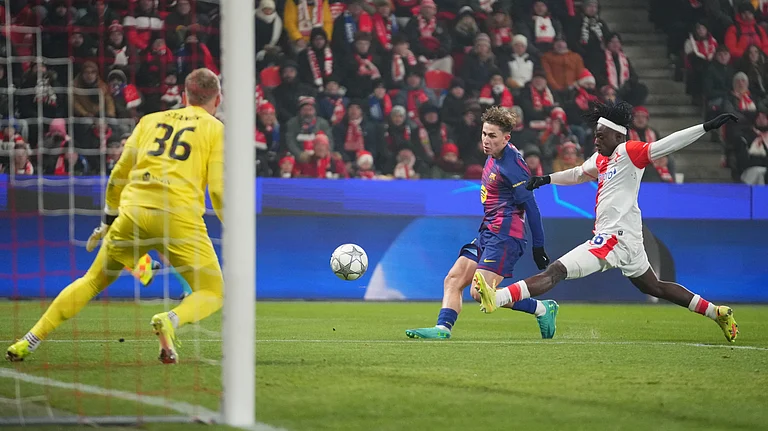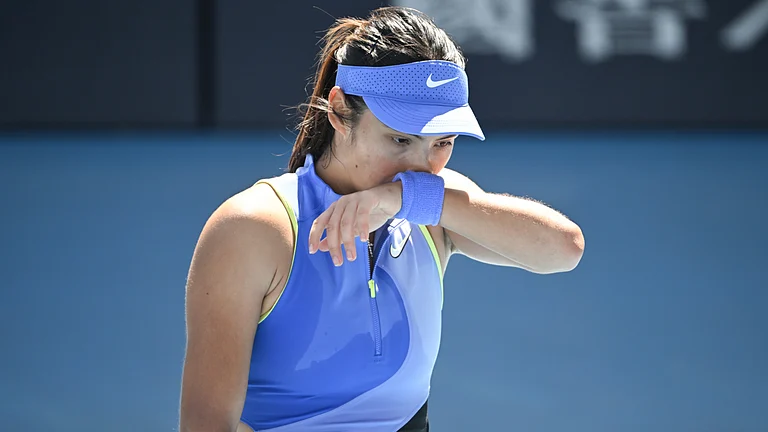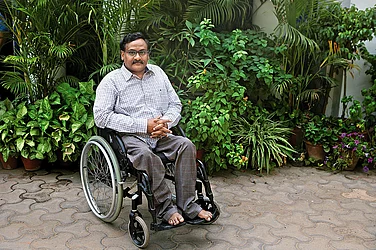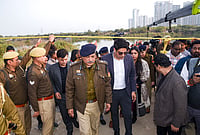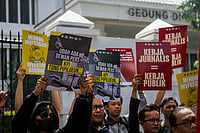The Central Bureau of Investigation (CBI) has formally taken over the probe into the Odisha train tragedy that killed 278 and injured over 1,100.
The triple-train accident occurred at Balasore in Odisha on Friday when several coaches of two passenger trains derailed after collisions.
After the Railways found that there was no driver error in the accident and the trains were not over-speeding, the potential sabotage of the electronic interlocking system emerged as the major point of discussion.
While possible sabotage of the electronic interlocking system is one angle, there are two other angles that the CBI is expected to look at: a botched repair near the accident site and a system failure.
Here we explain what we know so far of the Odisha train tragedy, the state of the investigation, and the angles that the CBI is set to look at.
What we know of the Odisha train tragedy
Two trains derailed near Bahanaga Bazar station in Balasore district in Odisha on Friday. This led to several coaches to derail and overturn.
First, the Chennai-bound Coromandel Express crashed with a goods train and its coaches got on the top of the goods train, according to Jaya Verma Sinha, Member of Operation and Business Development, Railway Board.
Sinha further said that the coaches of the Coromandel Express derailed after the crash. These derailed coaches hit the second passenger train passing on the adjacent track at the time, leading to some of its coaches also being derailed.
"Only one train was involved in the accident, it was the Coromandel Express. The Coromandel Express crashed with the goods train and its coaches went on top of the goods train. It was an iron ore train, a heavy train, therefore entire impact of the collision was on the train," said Sinha, as per PTI.
It was a fraction of a second that last two coaches of the Bengaluru-Howrah train crashed with the coaches of the Coromandel Express, said Sinha.
A total of 278 people are confirmed to have died in the accident and over 1,100 are known to have injured.
As to what led to the crash of Coromandel Express into the goods train, Associated Press reported Sinha as saying that, as per preliminary investigation, the train was given the signal to run on the main track line, but the signal later changed. The train followed this changed signal and entered an adjacent loop line where it crashed into the goods train.
No driver error, trains were not over-speeding: Railways
The possibility of sabotage in the form of tampering of systems has emerged after it was found that there was no driver error involved.
The Indian Railways said there was no driver error and none of the trains involved were over-speeding.
Sinha, also quoted above, said that the direction, route, and signal were set for the Coromandel Express.
She said, "Green signal means that in every way the driver knows that his path ahead is clear and he can go forward with his permitted maximum speed. The permitted speed at this section was 130 kmph and he was running his train at 128 kmph which we have confirmed from loco logs."
The Bengaluru-Howrah Superfast Express train was running at a speed of 126 kmph.
Sinha added, "In both the trains there was no question of over-speeding. Preliminary finding has found that there is a signalling issue."
What did Ashwini Vaishnaw say?
Separately, Railways Minister Ashwini Vaishnaw said the "root cause" of the accident has been identified.
Vaishnaw also said that "people responsible" have also been identified. He did not provide any details.
The PTI reported Vaishnaw as saying that the issue is of electric point machine, a vital device for railway signalling, and electronic interlocking.
The change that was made to electronic interlocking which led to the accident has been identified, said Vaishnaw.
Vaishnaw said, "The enquiry into the accident has been completed and as soon as the commissioner of railway safety (CRS) provides his report all the details will be known. The root cause of the horrifying incident has been identified...I do not want to go into details. Let the report come out. I will just say that the root cause and the people responsible have been identified."
Vaishnaw also announced that the Railways had recommended a CBI probe into the accident.
Why is the CBI investigating Odisha accident?
The CBI has formally taken over the Odisha train accident. The probe has been assigned to the CBI as the Centre wants to investigate all angles.
A 10-member CBI team inspected the tracks, signal room, and talked to railway officials at Bahanaga Bazar station on Tuesday, reported PTI.
A parallel investigation by the Commissioner of Railway Safety (CRS) is also going on.
The reason behind the accident will be known after completion of investigations by CBI and CRS, PTI quoted an official as saying, who added that the GRP in Balasore had registered an FIR and is also probing into the accident.
The NDTV reported that the CBI probe is required as it "will answer all queries regarding the accident".
"The move is significant as sources say only a detailed probe by a top agency can establish criminal tampering, if any, with the point machine or the electronic interlocking system, or if the train changed tracks due to reconfiguration or a signaling error," reported NDTV.
Business Today reported officials as saying that "deliberate interference" in the system necessitated the CBI inquiry.
"The Congress and other opposition parties questioned the need to hand over the case to the CBI but officials stressed that findings of a preliminary probe like 'deliberate interference' in the system necessitated the investigation by a professional agency," reported Business Today.
From botched repair to tampering, the angles CBI will look into
The CBI investigation will look at three possibilities to determine what caused the accident.
The main cause identified so far is an issue with the electronic interlocking system. The CBI is tasked with finding out what caused that issue.
Explaining this system, the AP reported, "The electronic interlocking system is a safety mechanism designed to prevent conflicting movements between trains. It also monitors the status of signals that tell drivers how close they are to a next train, how fast they can go and the presence of stationary trains on the track."
Earlier, Sinha, quoted above, and Principal Executive Director of Signalling Sandeep Mathur said that the system is "fail safe" and "error proof".
Sinha further said, "It is called a fail safe system, so it means that even if it fails, all the signals will turn red and all train operations will stop. Now, as the minister said there was a problem with the signalling system. It could be a physical error, whereby someone has done some digging without seeing the cables."
As clearly known, the trains did not stopped and the signal did not turn red. This leads to three angles that the CBI would investigate: 1) System failure 2) Digging leading to damage to the system 3) Tampering and sabotage
Here we explain each of three angles:
1) System failure
It will be proved whether the existing system has flaws in it which makes it prone to system failures.
This angle is bolstered by reports of such flaws having been flagged earlier this year as well.
Earlier this year in February, a train accident was averted after the system told a train to shift to a different line where a goods train was coming.
"Then, it was alertness of the locopilot that led to the Sampark Kranti Passenger Express stopping in time after realising he was being asked to proceed on the wrong line where a goods train was headed towards it," reported CNN-News18.
The Print reported that officials had flagged serious "flaws in the system" in February. In a letter dated February 9, the principal chief operating manager of South Western Railway zone mentioned the incident and said it indicates "serious flaws in the system where the route of dispatch gets altered after a train starts on signals with correct appearance of route in the SMS panel. This contravenes the essence and basic principles of interlocking".
2) Digging damaging the system
Repair work was being carried out near the site of accident. It will be probed if a "short-cut" to the repair damaged the system and led to the accident.
The CNN-News18 reported, "The boom barrier here had malfunctioned and the railway staff was fixing the same to allow safe passage of the passenger trains. However, the suspicion is that a 'shortcut job was done in a hurry' on the location box at the level crossing with the systems here, that need up disturbing the electronic interlocking system, sources say."
3) Sabotage
The fact that the signal was supposed to turn red in case of failure but did not turn so hints at the possibility of sabotage.
Khurda Road division DRM Rinkesh Ray suspected 'physical tampering' of the system of the Bahanaga station, according to IANS.
IANS quoted Ray as saying, "There was a green signal on the main line. The signal is usually green when all the pre-conditions required for the signal to go green are perfect. If any of the pre-conditions does not meet, technically the signal can never turn green, unless and until anyone physically tampers with the signal system. But, from the data records, it shows that when Coromandel Express was reaching the station, the signal was green, but the train moved to the loop line."
The possibility of tampering and sabotage, raised by Ray, was also hinted by former Railway Minister Dinesh Trivedi in an interview with News 18.
"This has been hinted at by former Railway Minister Dinesh Trivedi in an interview with News18 where he pointed out that too many coincidences had happened at the same time involving three trains and suggested planning and calculations behind the disturbance with the system," reported CNN-News18.








